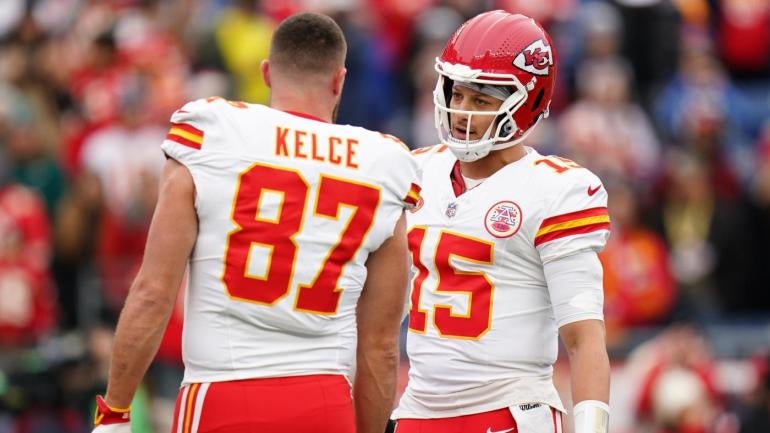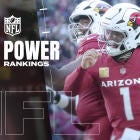
The NFL teams that retain the majority of their roster are typically doing so for a reason: they are good. Fewer new faces means less of a transition, which often translates to success on the field. CBS Sports is attempting to quantify continuity through weighted point values.
Teams receive points for returning players and even more points for longevity up to the three-plus years category. The grading scale allows for a maximum score of 100 points. It is broken down into four categories: coaching (maximum 15 points), offense (maximum 45 points), defense (maximum 35 points) and special teams (maximum five points). Teams with coaching longevity are rewarded in the rankings. The offensive and defensive categories are broken down into subcategories.
On offense, the focus is on quarterback in the scheme (maximum 15 points), quarterback-wide receiver relationship (maximum 10 points), offensive line (maximum 10 points), quarterback-tight end relationship (maximum 6.5 points) and running back in scheme (maximum six points). The latter two categories generally account for a maximum of five points, but teams using two tight ends or two running backs on more than 30% of their snaps have that tendency baked into their maximum score. Those points are then subtracted from the quarterback-wide receiver designation.
The defense is broken down into the front seven (maximum of 20 points) and secondary (maximum 15 points). The longevity of the defensive coaching staff is taken into account to reach a full score.
These are not power rankings, nor are they a projection of how the season will play out. It is context to validate support in a team or to express concern in a team receiving undue hype. It was originally a metric created to predict which teams may be best positioned to win during the COVID season in 2020. Three of the four teams in the 'Elite' category made the playoffs. The only team in the 'Average continuity' section or better (17 teams) to finish worse than 8-9 was the Texans. Although it was not created as a predictor, it did result in fairly accurate results, so it was brought back for another year. The results are below.
Teams with elite continuity
- 1. Chiefs, 84 points
- 2. Ravens, 73 points
- 3. 49ers, 72.5 points
- 4. Colts, 72 points
- 5. Browns, 70 points
The majority of the elite category will not come as a surprise, but the Colts certainly will stand out. The coaching staff has only been there for one year and quarterback Anthony Richardson is entering his second season. How are they rated so highly? Of the 26 players taken into consideration for this project, Indianapolis returns all but two from last year's roster. Defensive coordinator Gus Bradley has been there the past two years as well.
Teams with above-average continuity
- 6t. Cowboys, 69 points
- 6t. Lions, 69 points
- 8. Bills, 68.5 points
- 9. Bengals, 68 points
- 10. Jets, 64 points
- 11. Saints, 62 points
- 12t. Buccaneers, 61 points
- 12t. Patriots, 61 points
- 12t. Jaguars, 61 points
In the next tier of teams, most are expected to be in contention for a playoff berth. The lone exception would be the Patriots. New England is breaking in a first-year head coach who had been with the organization previously. The AFC East franchise was able to make the biggest leap in the rankings on defense, where it returns every starter except Matt Judon, and most have been in the system for more than three years.
Buffalo had a unique situation because offensive coordinator Ken Dorsey was relieved of his duties mid-season and Joe Brady served as the interim.
Teams with average continuity
- 15. Packers, 59 points
- 16. Raiders, 57.5 points
- 17. Falcons, 57 points
- 17t. Dolphins, 57 points
- 19t. Steelers, 56 points
- 19t. Broncos, 56 points
- 21. Giants, 55 points
- 22. Rams, 54 points
- 23t. Cardinals, 51 points
- 23t. Eagles, 51 points
The Eagles are expected to perform better than their lack of continuity may suggest. Philadelphia welcomes new coordinators this season, but it left a lot of points on the board in the back seven of the secondary and other areas scattered throughout the roster.
Teams with below-average continuity
- 25. Seahawks, 50 points
- 26. Bears, 48 points
- 27t. Texans, 45 points
- 27t. Vikings, 45 points
- 29. Chargers, 44 points
- 30. Panthers, 37 points
- 31. Titans, 31 points
- 32. Commanders, 25 points
Eight head coaching changes were made this offseason. Five of those teams found their way into the below-average continuity tier. Las Vegas was able to escape because Antonio Pierce had served as the interim head coach for a portion of last season. The other two teams were the Patriots and Falcons.
There is no question that the Texans are the biggest discrepancy between the data output and expectations for this season. Houston ascended quickly due to quarterback C.J. Stroud's proficiency at the position, but the majority of the roster is young. Houston made big changes on each side of the ball -- trading for wide receiver Stefon Diggs, signing edge rusher Danielle Hunter and more -- to raise its ceiling during Stroud's rookie contract.

















